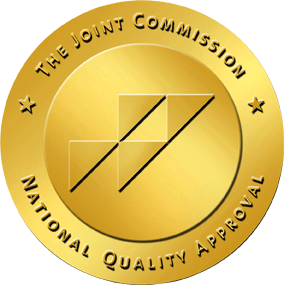Psychotherapy is a field to which people look to create change in their lives. It is a broad and diverse field that is full of approaches, interventions, treatment types, and modalities. If you are looking for treatment of substance abuse, psychologists, mental health clinicians, and certified counselors will utilize several different therapy types that best fit their patients. Vogue Recovery’s psychotherapy program can get you the treatment you need. Some treatments work best for specific disorders and illnesses. When it comes to treatment from addiction at a facility, mental health clinicians will need to streamline their approach since they have such a short time, however, below is a list of modalities which have proved beneficial. Your primary therapist will meet with you at least once a week or more, and other members of the team will lead you in either individual and/or group sessions. The therapists are under the supervision of the Clinical Director, who can oversee each case and determine the integrative approaches/therapies which the treatment team and facility utilize for each patient.
Psychotherapy Program at Vogue Recovery Center
Psychodynamic or “original” therapy is the root of modern-day mental health therapy. Psychodynamic therapy believes that change happens through insight and understanding of unresolved issues. It is also called ‘insight-oriented therapy.’ The therapist helps the patient understand why they are doing something to create change. It explores the “why’s” of behavior and how past experiences influence current behaviors. The origin of therapy was conceived by Sigmund Freud on which others on the field later expounded.
Psychodynamic therapies all have a distinct commonality of the focus on early stages of development in childhood and the behaviors created at these stages. It explore what dictates the current conscious, sub- and unconscious mind, defense mechanisms, and transference.
Exploring defense mechanisms can make someone aware of how they continue to handle or avoid certain situations. For example, adult compulsive behaviors and phobias may evolve out of childhood trauma. Self-medicating through substances can be the beginning of the addiction process in which the therapist and patient can determine if they deem necessary to the current events the patient is facing.
Transference is the term of what someone is feeling toward their therapist. If they become angry, it may be that the therapist reminds them of someone. This is often explored in psychodynamic therapy for the patient to “breakthrough” patterns of projection.
Psychodynamic is a non-directive, open-ended approach, and is based on free association led by the patient. It is good for high functioning people that are insightful and want to explore their relationships.
Therapists will only engage in psychodynamic therapy during the residential phase if something from childhood seems to be affecting or reoccurring with the patient. Also, some patients who are in their late teens or early twenties may benefit from Psychodynamic therapy because they are still experiencing the effects of early development. However, Psychodynamic therapy is most often introduced in recovery during the later stages of working with your therapist if you attend an intensive outpatient program (IOP) or aftercare program.
Behavioral Therapy
Behavioral therapy is founded on the understanding that change happens through reinforcements and punishments; that external forces help shape our behaviors. patients undergoing this type of treatment will get assistance in identifying the problem, monitoring their behavior, and then reinforcing desired behavior. In substance abuse treatment, an example of this is identifying and accepting that one has a disease, attending a treatment center or a 12 step group, and obtaining sobriety and relief because of it.
Behavioral therapy uses the terms “positive” and “negative.” This does not mean good or bad, but rather the adding or subtracting of something external. For instance,
- Negative reinforcement is followed by the removal of an adverse stimulus. For example: if a wife nags a husband and then she stops nagging after he cleans the house, she has removed the external pressure he learns that if he cleans the house, she won’t nag.
- Positive punishment is when we do something to someone else because of their bad behavior, they stop the behavior. For example, if a child has a tantrum and gets spanked. Positive punishment, or more commonly termed “punishment” for children and “punitive” for adults, has been debated on if it’s a helpful treatment for anyone,
- Negative punishment or penalty is the action of removing something that will stop the behavior. Like taking a toy away if they didn’t clean their room.
There is also something called “token economy”- when a person receives an object that represents a reward when performing positively. For instance, a person in recovery will often pick up a chip that states the length of sobriety they have achieved, in a public format, with positive reinforcement of the people around them. It can mark the milestones of an event and become a token of achievement.
Cognitive Behavioral Therapy (CBT)
Cognitive Behavioral Therapy or CBT focuses on changing someone’s behavior by learning to modify dysfunctional or harmful thought patterns and habits. Exploration of these thought patterns helps obtain and maintain sobriety. Thoughts can often mislead us; in the addiction treatment world, there are sayings such as “it’s the second thought that counts” and “your thoughts aren’t always truths.” Being able to make sense of the myriad of overlapping thoughts that often race around an addict’s mind is imperative for sustainable health. The focus is based on the automatic thoughts of a person, the world, and the future. This is called “cognitive triad.”
With CBT, a patient may with the help of the therapist:
- Identify patterns of beliefs that lead to destructive behavior and identifying initial thoughts.
- Understand the reasons for the behavior and the relationship between thoughts and feelings, therefore begin to make changes with belief systems
- Have a mindfulness and focus on automatic thoughts, assumptions, and core beliefs through identification and understanding.
Examples of common behavior among addicts are black and white thinking, catastrophizing, and minimalizing circumstances and events.
CBT is an research-based practice and has shown positive results with Addictions, Depression Disorders, Anxiety, and Bipolar Disorder
Dialectical Behavioral Therapy (DBT)
DBT is an offshoot of CBT, though it is a specialized therapy where clinicians are trained in the modality and become certified. Some mental health practitioners who are not yet certified in DBT will use a workbook or activity which deem helpful for patients. DBT activities can be very beneficial in treating addictive behavior and was created to help people suffering from Borderline Personality Disorder.
DBT is closely related to CBT by the basis of the treatment is the focus on changing one’s destructive behavior. However, DBT has a specific difference than CBT because of the strategies used to understand acceptance and change and the balance between them. DBT structures treatment into four phases:
- Identifying any life-threatening behaviors
- Becoming aware of resistance in therapy-interfering behaviors
- Assessing the quality of life behaviors
- Acquiring skills acquisition
DBT is an research-based treatment that has been proven through research to be effective in the reduction of suicidality, use of substances, clinical depression, rage and anger, self-harm, and resistance to therapy.
Experiential Therapies
Also called recreational or creative therapies, experiential therapies will most likely be a large part of the program structure at the recovery center. The most popular and widely used experiential therapies include:
- Yoga/mindfulness/meditation
- Art
- Drama
- Outdoor (hiking, beach, etc.)
- Equine
Some patients find that these activities, when turned into a therapeutic session, provide insight, self-awareness, and increase wellness. Experiential therapies can be done outside the treatment facility, especially when it is located at a specific out of doors area. Your counselors and staff members will attend these sessions with you, take notes, and have a post-session discussion on what worked when attending these sessions.
During these sessions, your safety should be placed first. If you feel ill-at-ease during any sessions, which might be new experiences or bring up any fears, please talk through it with the professional staff at the facility.
A good guideline to follow with experiential therapies are: do not push yourself farther; you can physically go and challenge yourself to go as far as you can. Often fears can be overcome, and breakthroughs in your treatment will occur during experiential therapy sessions.
Solution-Focused Brief Therapy (SFBT)
Strength-based brief goal-directed therapy, access resources focused on what the patient wants to achieve instead of the problem. It revolves around the “miracle question”- what the patient’s life would be like if they did not have their existing issues.
SFBT was developed in the 1980s as an antithesis to psychodynamic theories. It focuses on the present and future rather than the impacts of past experiences. The founders of SFBT implied that the traditional long-term psychodynamic approach was often met with negative results. They developed a system to provide brief interaction with the therapist to move forward and obtain goals and visions for their patients.
SFBT therapists work with their patients to find out what their vision of the future looks like, and then through a series of questioning, they both determine what the patient’s existing abilities and strengths are to obtain the desired outcome. The therapist assists the patient in making realistic goals to manifest successes in short periods.
Therapists that utilize SFBT help their patients find existing tools and new problem-solving techniques. SFBT is very useful when the addict in recovery is approaching transitioning and is involved with case management, as some present and future needs and goals will go hand-in-hand. It is also an intervention that can open up resistant patients to therapy in initial sessions and establish a rapport with their therapist.
Gestalt, “Here and Now”
Gestalt therapy believes that change occurs with the increased awareness of the here and now (present). The process focuses on the moment. The therapy looks passed the content on what the person is saying to concentrate on how the patient is affected. For instance, if the patient is telling a story, the therapist would focus on body language and expression. Gestalt can also focus on the relationship between the patient and therapist during sessions. There is a commonly used activity called the “empty chair” technique. This is where a patient pretends to be speaking to a person they are having issues with. This can help unresolved issues of resentment and assist in possible future events.
Structural Family Therapy
Structural family therapy believes that change happens through remodeling a family’s organization. It is a systems approach, where there may be a targeted patient (like the person in treatment), but the therapist would look at the entire system and family dynamic on how the patient has been effected.
Exploring family dynamics, the therapist can determine there have been appropriate boundaries and subsystems in place. Hierarchy, interactions of members, and divisions can be explored. Families can be “enmeshed,”- meaning that boundaries are being crossed that are unhealthy. A good example of this is that a patient is in treatment, but the parents have used it with them. Or a parent still gives the adult child money, all the while knowing they are using it on drugs but cannot see that they have a problem enabling.
A “disengaged” family has little or no emotional connection, which is common to find with patients at treatment centers. The patient has grown up without family dinners or involvement and turns to substances to fulfill an emotional void.
Logotherapy
Logotherapy was developed by holocaust survivor Victor Franco and focused on finding or rediscovering a person’s life purpose. The belief is that change happens through finding meaning in life and that it is the most motivating force. Finding meaning and purpose will take away anxiety and depression, which can lead to addiction and negative behaviors. Writing a personal mission statement may be an exercise that logotherapy addresses.
Task Centered Therapy
This type of therapy believes that change happens when patients take action to help themselves.
The patient would work alongside a therapist or case manager, and they would identify their problems and their goals. The patient would then see what they need to accomplish and prioritize. The therapist can assist in the steps it would take and the planning of goals. They could explore what would motivate the patient. The therapist can also give “homework” and meet weekly to discuss what was worked on while reviewing accomplishments and challenges.
Task centered is closely related to case management. But it addresses fears and anxieties around tasks in addition to the task itself. An example a recovering addict might have is cleaning up the wreckage of their past, obtaining a driver’s license, or paying off debts.
Eye Movement Desensitization and Reprocessing (EMDR)
EMDR is a therapy approach that is mostly utilized for the treatment of trauma. It is integrative and structured into different phases that fall under three distinctions: memories, present disturbances, and future actions. The processing of issues is not verbal with the therapist, but rather how the brain experiences and stores information. The brains stores memories of traumatic events. EMDR unlocks the memories and reprograms thoughts in such a way that it no longer affects decisions or causes ongoing fears and phobias.
The therapist will ask you to activate memory and focus on the event. This brings the memory forward to working memory. The therapist will move their fingers back and forth in front of your eyes in rapid succession. The working memory gets to process in the here and now and becomes blurred, which lessens the severity.
After sessions, the patient can feel less powerless, less anxious, less depressed, and leave the experience behind them. It does not get rid of the memory but gets rid of the attachment to the memory. For example, an army veteran hears loud sounds, which remind them of a combat situation where several casualties occurred. They can’t leave the house in fear of loud noises triggering a response of dropping to the ground. After EMDR sessions, when a loud noise occurs, they no longer drop to the ground.
The goal of EMDR therapy is to shift negative responses from trauma to useful behaviors.
Vogue Recovery’s Psychotherapy Program
Having several interventions available for you during recovery is the best option. Not one person is the same. Although many of the above therapies have proven effective for people in treatment, you will discover what resonates with you. Keeping a dialogue with your primary therapist on what you are finding helpful is important. However, do not confuse what’s easiest is the best. Often, we find we get the most out of therapies that challenge us to do deeper work on ourselves.
To learn more about our world-class program and comfortable approach, call (866) 682-8449 today.

Medically Reviewed by Kelsey Jones, MS, LPC



